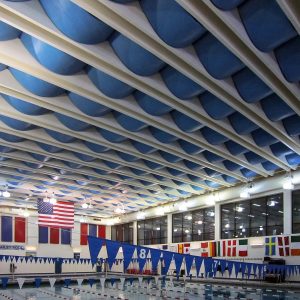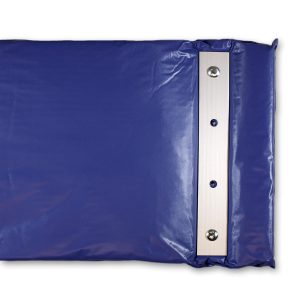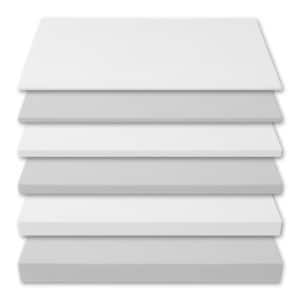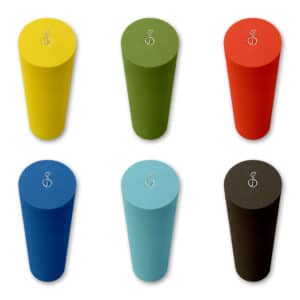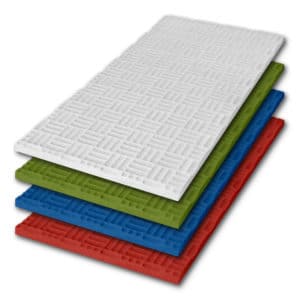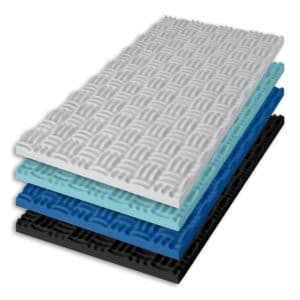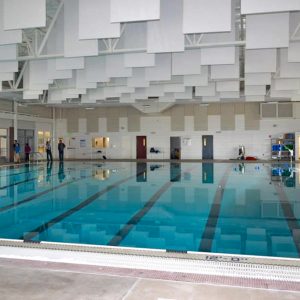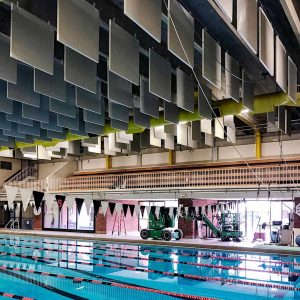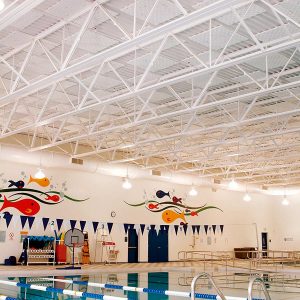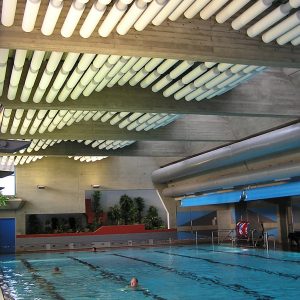Soundproofing an Indoor Pool is important for many reasons, especially when you consider the variety of events and activities that take place there. Pools are ot just for recreational swimming. Indoor pools may be a place for swim lessons, aqua-aerobics, swim meets and races, lifeguard training and even water yoga! Because safety, instruction and fun are all important, it is essential to address what is often a constant problem at indoor pools: the acoustics. Soundproofing an indoor pool is vital to create a good experience at the facility.
The hard surfaces of indoor pools do very little to provide sound absorption. Concrete block or concrete ceilings are usually the culprits. Sound has nowhere to go and bounces around the room. Without any acoustic treatment, the acoustics will be poor and create a terrible echo, making it nearly impossible to communicate. This can cause a safety issue, simply because people cannot hear instructions or direction from the lifeguard.
Soundproofing A Natatorium (Indoor Pool)
A great solution for soundproofing an indoor pool is to use AlphaEnviro® PVC Sound Baffles or AlphaFlex® PVC Ceiling Banners. By suspending sound absorbing baffles from the ceiling, they provide an unobtrusive treatment out of the way of the patrons and activities. These wipe-able surfaced, moisture resistant baffles are perfect for large open spaces. By reducing echo and reverberation, acoustic baffles improve speech intelligibility. They are easy to maintain, and they are an economical choice. If there is space on the walls, AlphaEnviro® PVC Wall Panels may be used. Alternatively, you can use acoustic foam panels or baffles to create different aesthetic designs.
Keep in mind that acoustical foam may expand or contract due to the changing levels of moisture in the room. So be sure to install the materials with extra space around each the panels. In all cases, it is important to remember to use installation hardware and methods that will be durable in humid environments.
The stressful environment of competing sounds may not only from people, but from the pool equipment. If pool pumps are not in a soundproof room, distracting noise will permeate throughout the space. One way to solve this is to soundproof the wall. If the room is already built, lining the walls will barrier blankets like the PrivacyShield® Dual-Sided Absorptive Soundproofing Blanket will help block noise with its vinyl sound barrier septum. Then the door may be sealed with an Acoustic Door Seal Kit.
Desired Results
If instruction is a key component to the successful operation of your indoor pool facility, a reverb time of 1 – 1.5 seconds would be desirable. If you are just looking to just lower the noise to a comfortable level, then 2 seconds might be acceptable. In either case, getting enough sound absorption in the room to soundproof the indoor pool with provide a long-lasting environment that everyone can enjoy.
Acoustic Materials for Soundproofing an Indoor Pool
Featured Applications
To learn more about how Acoustical Solutions can solve your noise control problems, use our contact form, call one of our Acoustical Sales Consultants at (800) 782-5742, or visit us on the web at acousticalsolutions.com.
